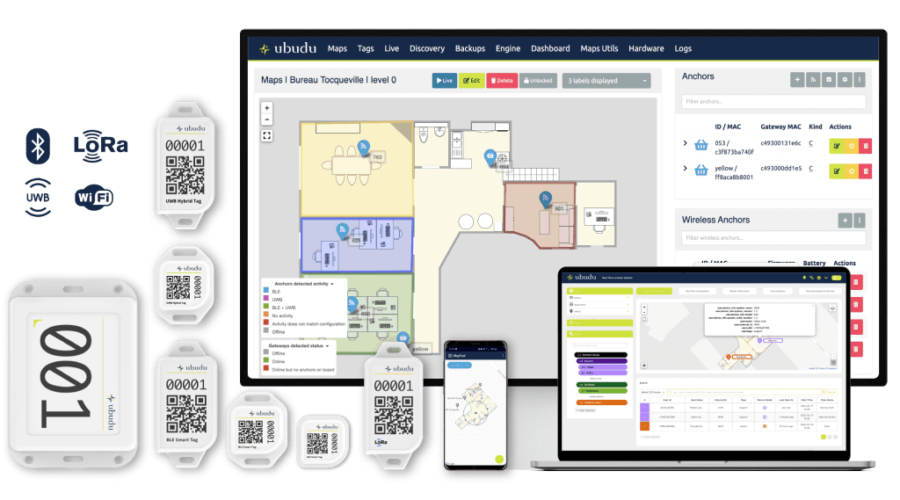RTLS (Real-Time Locating System) is a technology used to determine the precise location of objects in real time. It uses various technologies such as GPS, RFID, Wi-Fi, and other wireless communications to track and locate objects or people within a specific area. RTLS is commonly used in industries such as healthcare, retail, logistics, and manufacturing to track assets, monitor inventory, enhance safety and security, and improve operational efficiency.
Deploying an RTLS solution can bring several benefits to organizations. These include:
- Increased visibility and tracking: RTLS provides real-time information about the location, movement, and status of assets, people, and equipment, which can help organizations make informed decisions and respond quickly to changing situations.
- Improved operational efficiency: RTLS can automate manual processes, reduce manual errors, and help organizations optimize their operations by providing real-time data on resource utilization, workflows, and performance.
- Enhanced safety and security: RTLS can help organizations monitor employee and visitor movement, track high-value assets, and quickly respond to security incidents, reducing the risk of theft, loss, or damage.
- Improved inventory management: RTLS can provide real-time visibility into inventory levels, reducing the risk of stock-outs and overstocking, and improving order accuracy.
- Better customer experience: RTLS can be used to track and manage customer interactions, improving wait times, service quality, and overall customer satisfaction.
- Reduced costs: By improving operational efficiency, reducing manual errors, and streamlining processes, RTLS can help organizations reduce their costs and increase profitability.
Technologies supported in our hybrid RTLS system include:
- RFID (Radio Frequency Identification): RFID uses radio waves to communicate between a reader and a tag attached to an object to determine its location. RFID is widely used in RTLS due to its low cost, low power consumption, and ability to track assets in real-time.
- GPS (Global Positioning System): GPS uses satellite signals to determine the location of objects with high accuracy. GPS is commonly used in RTLS for outdoor tracking of vehicles, people, and assets.
- Wi-Fi: Wi-Fi based RTLS uses Wi-Fi signals to triangulate the position of an object within a coverage area. Wi-Fi RTLS is widely used in indoor environments and provides high accuracy and low latency.
- BLE (Bluetooth Low Energy): BLE is a wireless technology that provides low-power, low-cost tracking solutions for RTLS. BLE is widely used in RTLS for indoor tracking and provides a high degree of accuracy and low latency.
- Ultra-Wideband (UWB): UWB is a wireless technology that uses pulses of energy to determine the location of objects with high accuracy. UWB is widely used in RTLS for industrial and logistics applications, where high accuracy and reliability are required.
These technologies can used in combination to provide a comprehensive RTLS solution that meets the specific needs of an organization.

Qonda System has partnered with Ubudu, France, and other global equipment manufacturers to offer complete end-to-end RTLS solutions (hardware and software) that support many different tracking technologies – a hybrid system, based on BLE (RSSI, AoA), UWB, LoRa, RFID, 4G LTE, WiFi and combinations of these technologies to deliver an open, adaptive solution that growth with technology innovation. Being a hybrid and open system, newly developed tracking technology can be incorporated with ease and in combination with other technologies in provide best-of-breed cost-effective solutions.
Ubudu’s hybrid RTLS offers indoor positioning, geofencing, and flow analytics, utilizing various technical designs to cater to the specific requirements of various industries. The system has been used by factories, hospitals, and restaurants to improve their operational performance.
Deployed in more than 5,000 sites in 30 countries, Ubudu RTLS saves more than 15,000 hours of work every day for its customers such as Schneider Electric, Heuliez, Alcatel Submarine Networks, McDonald’s, Paris Saint-Joseph Hospital and Queen Elizabeth Hospital.
